Asian Beetle vs Ladybug: Characteristics & Differences
-
Pete Ortiz
- Last updated:
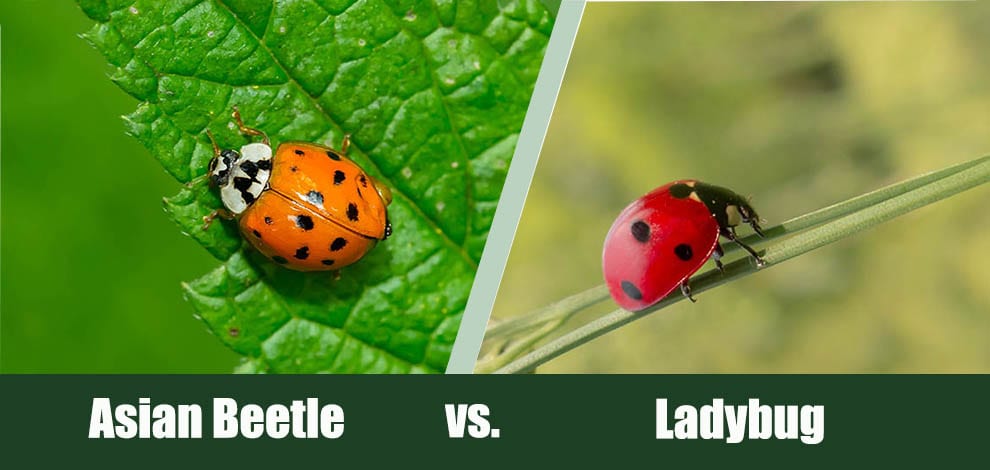
Not many people can tell the difference between an Asian beetle (otherwise known as an Asian ladybeetle) from a common ladybug, given how similar they are. For starters, they both have brightly colored bodies. What’s more, the Asian beetle is actually a ladybug species, making things even more confusing.
So, what is the difference between an Asian beetle and a ladybug?
The main difference between these two insects is their size. An Asian beetle is a bit larger than a common ladybug. Stick around to learn more about the difference between these two insects.
Visual Differences

At a Glance
- Origin: Asia
- Size: About 0.33 inches
- Color: Varies from red to orange, and they may or may not have spots
- Body shape: Oval-shaped with a pointed head and snout
- Origin: Believed to have originated from Europe
- Size: About 0.31 inches
- Color: Mainly bright red with spots
- Body shape: Round or slightly oval-shaped
 Ladybug Overview
Ladybug Overview
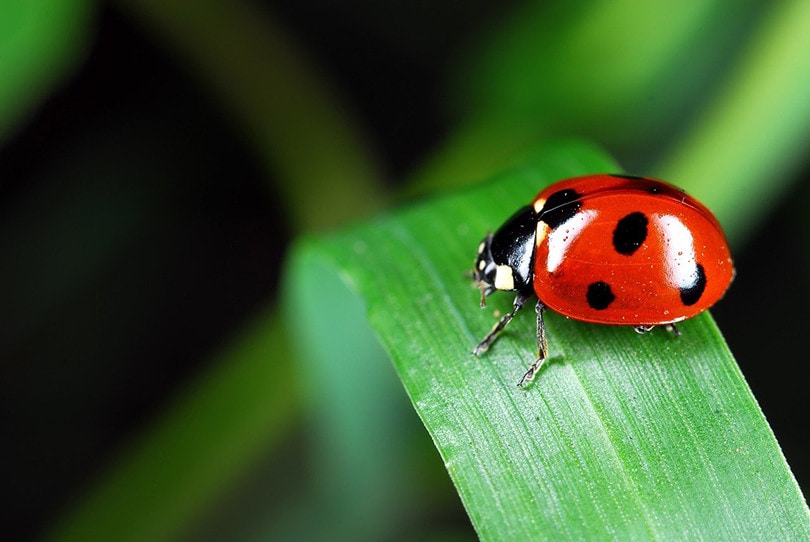
The history behind the existence of ladybugs is quite an interesting one. Believed to have originated from Northern Europe, legend has it that farmers once prayed to the Lady Virgin Mary to help eliminate the pests destroying their crops.
It is believed that the Virgin Mary sent a swarm of tiny beetles, which began eating these pests. Concluding that these insects were an answer from the Lady Virgin Mary, the people named them “Our Lady’s Birds,” now known as beetles or ladybugs.
Characteristics and Appearance
As we mentioned earlier, ladybugs are smaller than Asian beetles. They are also predominantly bright red with spots. The most common ladybug species you’re most likely to come across is the seven-spotted ladybug (Coccinella septempunctata). This ladybird has a bright red outer shell with exactly seven spots.
Ladybugs are also known to be “less invasive” than Asian beetles, a topic we’ll look into later in this article.
Use
Many people use ladybugs as a way to protect their gardens and crops. These beetles are excellent for pest management as they will eat soft-bodied insects, usually aphids. These aphids suck the juice from the plants, negatively affecting the plant’s growth. Adult ladybugs and larvae will consume those aphids.
Asian Beetle Overview
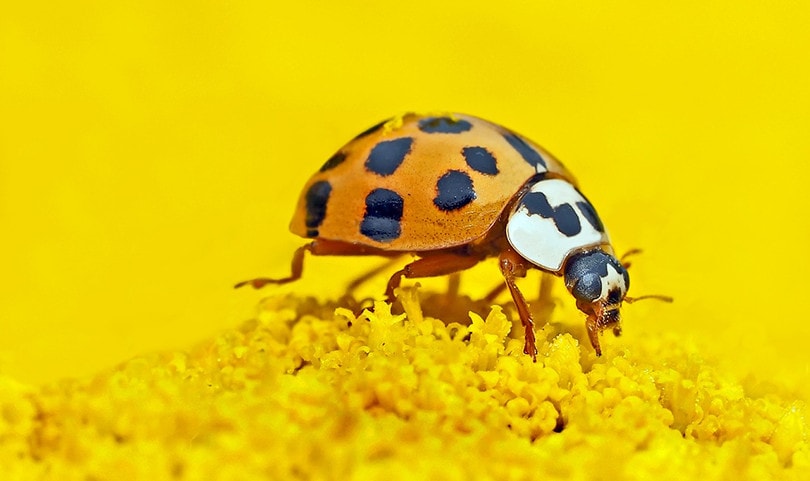
The Asian beetle is believed to have originated from Asia, more specifically, Japan, China, Korea, and even Russia. This insect was first introduced in the United States in the late 1980s as a pest control agent, which explains why it is the most common ladybug species in the US.
Characteristics and Appearance
Asian beetles are bigger than common ladybugs, with their outer shell color ranging from orange (the most common one) to yellow, red, and very rarely black. Asian beetles may or may not have spots on their outer shells.
Asian beetles are known to highly invasive than common ladybirds, a topic we’ll also explore more later in this article.
Use
Like the ladybugs, Asian beetles will also feed on aphids and other pests that destroy crops. Because of this, they are usually welcome in gardens or on farms.
What Are the Differences Between an Asian beetle and a Ladybug?
As we explained earlier, Asian beetles are actually one of the many ladybug species. Still confused? Let’s break it down a little further. Ladybugs are scientifically known as Coccinellidae. The Asian beetle is scientifically known as Harmonia axyridis and is under the Coccinellidae family in the biological animal kingdom classification.
So, the Asian beetle is a ladybug species.
However, Asian beetles are quite distinctive from common ladybug species in several ways. Let’s take a look at the differences between them.
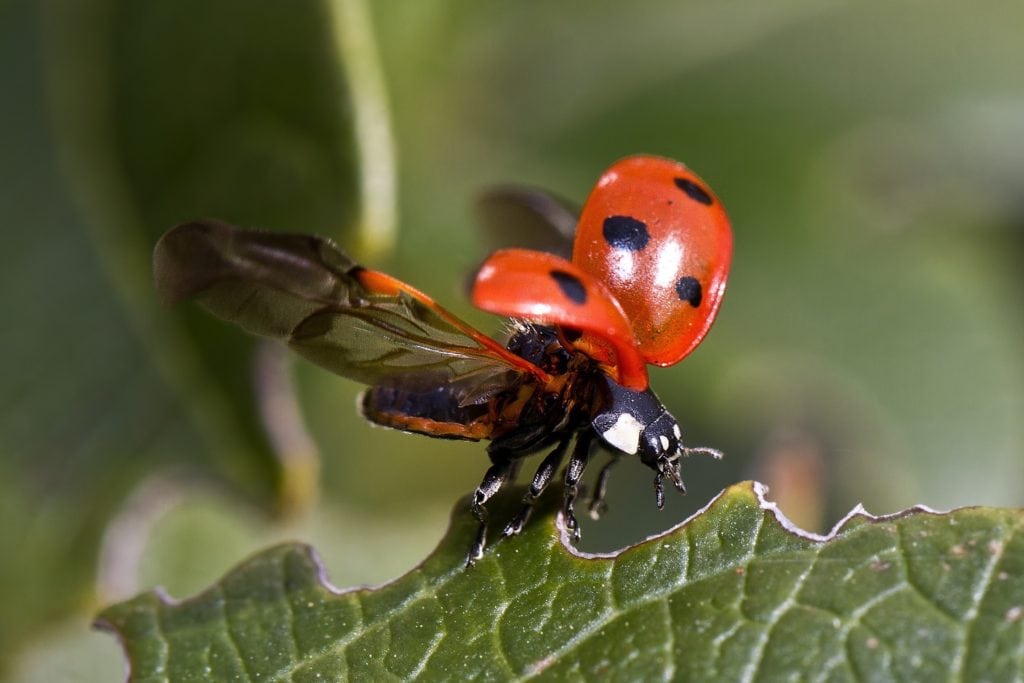
Physical Appearance
We’ve already explored the physical differences between an Asian beetle and a common ladybug, from its color to its size and body shape. Another distinctive physical feature in Asian beetles is the marking on their heads.
Usually, these insects have a dark marking on the white spot behind their heads that looks like an “M” or a “W.” This marking is one of the main features used to differentiate Asian beetles from other common ladybug species.
Defense Mechanisms
There is a lot of confusion when differentiating Asian beetles from other ladybirds when it comes to how they defend themselves.
As we mentioned earlier, Asian beetles are a ladybug species, so they have the same defense mechanisms as other ladybirds. However, they may be more aggressive than other common ladybirds.
For starters, all ladybugs, including Asian beetles, “play dead” when they feel threatened. What’s more, all ladybird species also release blood (reflex bleeding), which has a foul odor from their bodies when provoked.
Typically, a ladybug will “play dead” when it senses there’s a predator around. Then, it will release a little blood from its legs, and the alkaloids in the blood will make it have a strong, foul smell. The combination of these defense mechanisms will be a strong indicator to predators that it is not a tasty snack.
All ladybugs, including Asian beetles, also bite if provoked. However, Asian beetles are known to bite more when they feel threatened compared to other ladybirds. What’s more, Asian beetle bites are also more aggressive and painful than other ladybugs.
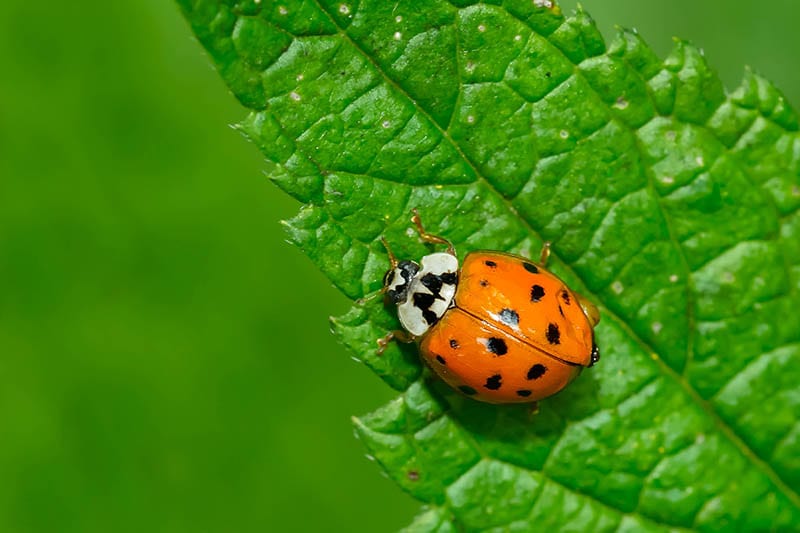
Hibernation
Every ladybug species, including Asian beetles, hibernate during winter. Since they are ectothermic, ladybirds need to slow down their bodily activities during the winter season to survive. Typically, their ideal hibernation location depends on several factors.
For starters, ladybirds prefer hibernating, where they are less likely to be found by predators. So, you’ll most likely find them under rocks, rotten tree logs, or any secluded area.
They also prefer to hibernate in warm areas. Remember, these insects are ectothermic, meaning the regulation of their body temperatures depends on the external environment. So, since it’s cold during winter, ladybirds hibernate in warm locations to keep their internal body temperature in check.
It is due to this reason that you may find ladybugs, more specifically Asian beetles, in your home during winter. This is because they move as far as they can in search of a warm place to hibernate; they may find their way into your home through cracks and gaps in your house.
Allergic Reactions to Humans
Although all ladybirds, including Asian beetles, aren’t poisonous, Asian beetles have been proven to trigger allergic reactions in people allergic to ladybugs.
Allergic reactions to Asian beetles (Harmonia axyridis) are not uncommon in the United States.
Conclusion
The best way to differentiate between an Asian beetle and a common ladybug species is through their physical characteristics. Although they may look similar at a glance, they are quite different if you look at them closely.
While both are beneficial for gardens and crops, they can still be considered a nuisance as they can invade your home. So, you will need to weigh the pros and cons of having the ladybug or the Asian beetle.
- https://a-z-animals.com/blog/ladybug-vs-asian-beetle-5-key-differences-explained/
- https://plunketts.net/blog/ladybugs-vs-asian-lady-beetles
- https://peppershomeandgarden.com/ladybug-vs-asian-beetle/
- https://pubmed.ncbi.nlm.nih.gov/18430308/
- https://hortnews.extension.iastate.edu/ladybug-multicolored-asian-lady-beetle
Featured Image Credit: (L) Paul Reeves Photography, Shutterstock
Contents




